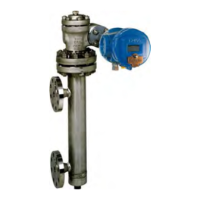® 2014 General Electric Company. All rights reserved. Masoneilan 12400 Series Transmitter/Controller Instruction Manual | 41
7.7.3.2. Controller configuration
Controller Action
Click either Direct or Reverse. Direct action means that the 4-20mA controller output
increases when the process variable is greater than the setpoint when process variable (is
lower than setpoint for Reverse action).
Click either PV or Error. This determines whether calculations are based on process variable
or error.
Enter the percentage for the control dead zone. The controller output will remain
unchanged as the error remains within this dead zone.
Enter a value to limit how fast the controller output can change.
Enter the percentage for the controller bias during a reset.
Controller Rate (s)
Enter the value to define the time between the controller output is refreshed. The value
shall be a multiple of 0.06. The instrument will do rounding automatically.
7.7.3.3. PID parameters settings
P
P is a dimensionless gain factor related to the proportioning action of the algorithm. It
ranges from 0 to 50.
The Integral time (or reset time) is the time constant of integral control. Higher values of I
cause slower integral action. Common values are 0 to 100 (10 seconds). A value of zero
disables integral action.
Derivative time or rate time is the time constant of derivative control expressed in
milliseconds. It ranges from 0 to 5000 msec. A value of zero disables derivative action.
Differential gain used in PID controller for position. It ranges from 0 to 100.
Beta is a nonlinear dimensionless gain factor, ranging from -9 to 9. When beta is 0, the
controller gain is linear. Otherwise the gain is the function of error. The larger the beta, the
smaller the gain for small error.
Saves the configuration to the device.
7.7.3.4. Controller alarms
Alarm Type
• Absolute: Determines that alarming is performed when the process variable go beyond
the controller alarm values (exceeds for high alarm and go below for low alarm).
• Deviation: Determines that alarming is performed when the difference between the
process variable and the setpoint is greater the deviation value.
• The alarm limits are entered in the same units as the process variable.
Low and High Controller
Alarms
Click the checkbox and enter a value for the appropriate level (s). These limits must be
within 10% of the High Setpoint value and High Setpoint value, respectively. See PID
Controller Setpoint Range.

